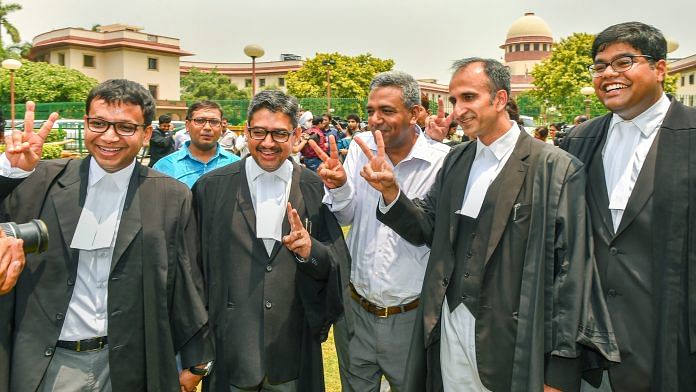Court ruled that it was the democratically elected government, and not the L-G, who exercises executive power and assumes responsibility in Delhi.
Ever since it swept to power in 2015, the Aam Aadmi Party (AAP) has struggled to exercise authority. Conflicts between the chief minister and the Lieutenant Governor (L-G) have been somewhat of a democratic scandal. But they have also raised an important question of law – the status of the National Capital Territory of Delhi under the Constitution.
On Wednesday, the Supreme Court settled this matter, delivering a decision that represents a major victory for the AAP. But the decision, carefully reasoned and persuasively argued, is also a major victory for the rule of law. It affirms some of the major features of our constitutional order.
The case dealt with an interpretation of Article 239AA of the Constitution. This provision, inserted into the Constitution in 1991, gave Delhi a legislature and a council of ministers. But it also left in place the office of the L-G, a central government appointee, who was previously charged with administering the territory. What powers would this office now exercise, and what relationship did it share with the legislature and council of ministers?
Article 239AA gave the Delhi government the same legislative authority as other states, barring three specifically excepted matters (public order, police and land). This was clear enough, but the central question before the court was the nature of executive power: the L-G was to act on the aid and advice of the council of ministers. But was he bound by this advice?
The court answered this in the affirmative, in line with the parliamentary structure of the government in India, with the principle of collective responsibility of the council ministers, and with the idea that legislative and executive power must overlap. The court understood that the core feature of Indian federalism is not the parity of power between the Centre and states, but the vesting of certain exclusive powers in each. It highlighted the fact that in any representative system, the democratically elected office must, as Chief Justice Misra’s majority opinion put it, assume responsibility.
The court’s approach grasped that any other interpretation would have rendered the entire point of a legislature for Delhi meaningless. The reason why legislative and executive powers are co-extensive under the Constitution, whether at the Centre or states, is because only this makes democracy and governance possible: it makes it possible for someone to take decisions, and it makes it possible for us to hold that person accountable for those decisions. Delhi is special not because it departs from this, but because it does not have either the legislative or executive power with regard to the three items that other states enjoy.
But this is not the full story. Article 239AA is not so simple, alas, and allows the L-G, in cases of a disagreement between him and the CM, to refer the matter to the President, whose view shall prevail (that is, the central government’s view shall prevail). The question is what matters can the L-G refer to the President? Would any matter count?
The Constitution is silent here and the majority opinion did not provide a detailed answer. It did, however, correctly note that the reference power was an exception, and that it was a departure from the norm, and must as such occur in situations so serious as to warrant such a departure. Justice Chandrachud’s concurring opinion seemed to provide more of a limiting principle by focusing on national concerns, but it too recognised that “it would not be possible for a court delivering judgment in the context of the problem of the day to anticipate situations that may arise in the future”.
The court may have said more here but there was a certain degree of discipline in its verdict. The court established the general principle unambiguously, and recognised, in classic common law terms, that the terrain of exceptions would be mapped by the terrain of experiences. Importantly, it ruled that the L-G was a constitutional functionary, that the office demands judgment and reason and objectivity, and that beyond a certain point, until specific cases arise, the court can only underline the responsibility of that office.
Indeed, although the decision is rich in its recognition of parliamentary government, the underlying message is the indictment of the L-G’s office. The court acknowledged, as it did in the recent Karnataka floor test decision involving the governor, that posts like the L-G do not exist to substitute a democratically elected government but to navigate grave constitutional crises in special, narrow situations with fairness and care. The very fact that the powers of offices like the governor or L-G are so few makes it all the more important for them to demonstrate constitutional judgment. No court can provide that, but the Supreme Court deserves credit for saying it.
Madhav Khosla, co-editor of the Oxford Handbook of the Indian Constitution, is a junior fellow at the Harvard Society of Fellows. His Twitter handle is @M_Khosla.






